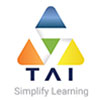During the course, you acquire the specific skills, behaviors and the mindset necessary to become a successful Certified Scrum Master and servant-leader. Through training, practice sessions and role-playing activities, you learn Scrum to create customer satisfaction with the continuous delivery of high-value software.
About Certified Scrum Master
Who can take this training?
Useful to Product Owners, members of Scrum Development teams, managers, Human Resource (HR) specialists and anyone else who needs to appreciate the role and competencies required of a Scrum Master.
Prerequisites
The Scrum Guide will be emailed to students for pre-course reading.
A Scrum Alliance Certified Scrum Trainer (CST) leads this course. In-person, on-time attendance, and full participation is expected. While emergencies are understandable, being fully present for the full two days is a requirement for the CST to recommend you to the Scrum Alliance for certification.
Course Outline
Introducing Agile Principles
- Defining Agile values and principles
- Contrasting Waterfall and Agile product-development philosophies
- Confronting the challenges of adopting Agile
- Creating a cross-functional team
Defining the Scrum Framework
Adopting Scrum
- Defining the core Scrum Framework
- Core Scrum team, artifacts and ceremonies
- Adapting traditional business process to Scrum
- Applying core Scrum Values
Scrum Roles, Ceremonies and Artifacts
Introducing the Core Scrum Roles
- Outlining the three roles: ScrumMaster, Product Owner and Development team
- ScrumMaster: performing as a servant leader to the team
- Product Owner: developing the product vision and backlog
- Development team: delivering the product increment
Defining the Core Scrum Ceremonies
- Refining the Product Backlog
- Holding the Sprint Planning meeting
- Hosting the Daily Scrum
- Leading Sprint Reviews
- Facilitating successful Sprint Retrospectives
Detailing the Core Scrum Artifacts
- Creating the Product Backlog
- Implementing the Sprint Backlog
- Defining the Definition of Done
- Developing potentially shippable product increment
Refining the Product Backlog
Iterating the Product Backlog
- Developing the Product Vision
- Building the Product Backlog
- Continuously refining the Product Backlog
Refining Product Delivery
- Comparing iterative and incremental delivery
- Decomposing Epics into features and stories
- Releasing products with Minimal Marketable Features
Estimating and Prioritizing Product Backlog Items
Creating user stories
- Writing user stories with the Connextra format
- Evolving product requirements
- Applying frameworks to focus user stories
- Developing products with progressive elaboration
- Defining appropriate acceptance criteria
- Removing user stories when appropriate
User story estimating
- Sizing user stories
- Estimating effort and business value level through relative measurement
- Comparing and contrasting affinity and planning poker estimation techniques
- Breaking user stories into tasks
Prioritizing the Product Backlog
- Ranking product backlog item priority at the release, product and project level
- Utilizing prioritization techniques and frameworks
- Identifying high-priority items for sprint planning
ScrumMaster Responsibilities to the Team
Growing the Scrum team
- Enforcing the Scrum process
- Establishing team working agreements
- Removing Impediments
- Becoming an Agile coach for your team
Ensuring long-term success
- Continuously improving the team
- Reporting appropriate metrics
- Managing and reducing external dependencies
- Adopting best practices for software engineering
- Acting as an Agile champion in your organization
Call Now- +91-921-276-0556


